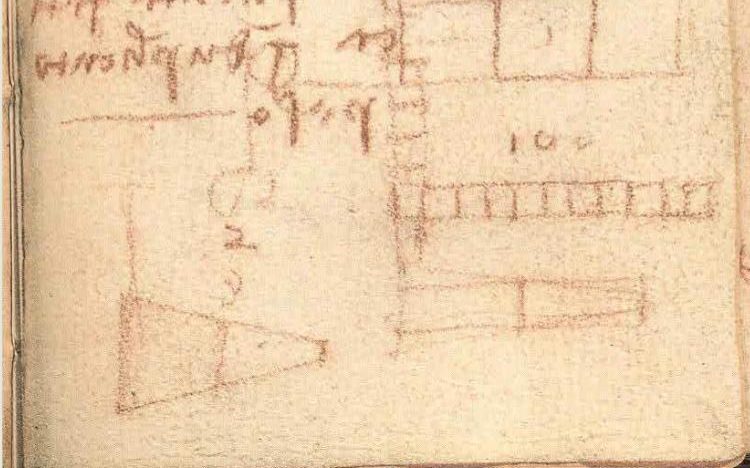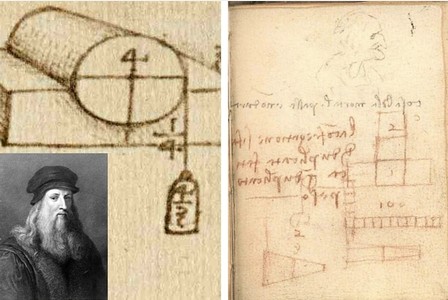Leonardo da Vinci. Quite possibly the only person in the world to have his Wikipedia page describe him as a “polymath whose areas of interest included invention, painting, sculpting, architecture, science, music, mathematics, engineering, literature, anatomy, geology, astronomy, botany, writing, history and cartography.” and “the father of palaeontology, ichnology and architecture.”. And arguably the world’s most prolific doodler, having made sketches, notes and studies of everything which caught his fancy, he filled thousands of pages with his observations and ideas about everything from artillery tanks to an improved toilet design.
And it has come to the attention of Ian Hutchings, a professor at the University of Cambridge, that some of these sketches (dating back to 1493), deemed ‘irrelevant notes and diagrams in red chalk’ by a museum director when he inspected them in the 1920s, might contain something a bit more important than what this description suggests: groundbreaking discoveries in physics, which – in signature Leonardo da Vinci style – were quite literally two hundred years ahead of their time.
Nearly a century after the museum director’s ignorant remarks, Hutchings realised that it was possible that this page contained more than met the eye. The rough geometrical figures drawn under the red chalk notes depicted a series of blocks being pulled by a weight hanging by a pulley. Some high school students may recognise this as similar to the kind of experiments done in science labs in order to demonstrate the properties of friction (for those readers out of touch with these physics concepts, friction is the resistive force an object feels when it moves over another.)

Dr Ian Hutchings
These notes enumerated his observations about the way friction behaved on different surfaces, and they appear to be the first historical formulation of the laws of friction, which were later discovered and credited to a French scientist named Guillame Amontons. These notes indicate that Leonardo, through his experimentative methodology, was able to ascertain that the force of friction between two surfaces was proportional to the force pressing these two surfaces together and that it is completely independent of the area between these two surfaces. This was 200 years before it was first published and close to 300 years before it was first experimentally verified.
It is believed that his investigations into the nature of friction and resistance was fundamental to many of the complex mechanical inventions he devised later. He used his observations of these properties of friction and used these concepts in various components of his machines, like wheels, pulleys and axles.
 Professor Ian Hutchings remarked, “Leonardo’s 20 year study of friction, which incorporated his empirical understanding into models for several mechanical systems, confirms his position as a remarkable and inspirational pioneer of tribology.”
Professor Ian Hutchings remarked, “Leonardo’s 20 year study of friction, which incorporated his empirical understanding into models for several mechanical systems, confirms his position as a remarkable and inspirational pioneer of tribology.”
The discovery made by Professor Ian Hutchings is an important one because it reveals that the Universal Genius, as Leonardo is often referred to, had been able to observe an important fact centuries before it was investigated scientifically by Amontons.
It once again demonstrates the rewards of indulging your own curiosity sometimes, and of investigating; of observing, not seeing.
Written by Kartikey Sharma
Tags: Guillame Amontons Ian Hutchings Leonardo da Vinci The Da Vinci Doodle








